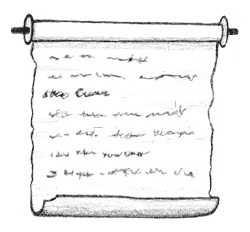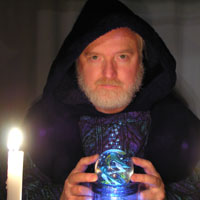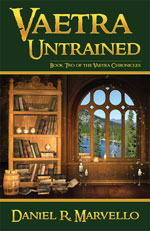This post is part of a series I did to describe how magic works in the Vaetra Chronicles. If you would like to read the other posts as well, check out the Theory of Vaetra category.
[SCROLL LABEL]
Sources and Flows of Vaetra, Volume 4
The Principles of Alchemy
Level: Apprentice
Author: Toman Retarine, Professor of Alchemy
[SCROLL CONTENT]
This primer is the fourth volume in the Sources and Flows of Vaetra series. Before studying the Principles of Alchemy, students should study and understand the information contained in the first two volumes of this series: The Principles of Sorcery and The Principles of Vaetra. This primer is an introduction to alchemy. It explains the differences between “tonics” and “potions,” and it describes the general process by which potions are created.
Tonics versus Potions
Both tonics and potions are made from a base liquid that has been infused, steeped, brewed, or otherwise combined with additional ingredients. However the term “potion” is usually reserved for magical versions of such liquids, while non-magical versions are known as “tonics.” To use the term “potion” when describing a tonic is considered misleading, as is the reverse.
People who make tonics are known as “tonic brewers,” or simply “brewers,” although brewing is only one of the techniques commonly used to create tonics. The term originates from the fact that most brewers also produce beer and/or wine, which is usually their principle source of income.
Only a sorcerer (more specifically, a caster) can make potions. When sufficiently skilled, these individuals are recognized as “alchemists.”
Tonics are as effective as the ingredients they contain. For example, a tea steeped with St. John’s Wort is known to improve mood, and a tea steeped with echinacea is known to ward against illness. These effects are natural and do not require the influence of vaetra.
Potions are similar to tonics, except they have been infused with an incantation. What the potion does depends more upon the incantation used than the properties of the ingredients themselves. All casters have the ability to create potions, but proficiency in alchemy requires a fair amount of training and experience with the tools and techniques of the discipline.
The Ingredient Principle
When creating a potion, the alchemist associates each ingredient with a specific element of the incantation to be used. Although virtually any incantation element can be associated with any ingredient, specific ingredients work better at reinforcing specific incantation elements. For example, when creating a healing potion for a flesh wound, yarrow is widely considered the best ingredient for the element of the incantation that knits sundered flesh back together. For repairing internal damage, sage is the better choice.
The Holistic Principle
A vaetric potion is similar to a vaetric implement in that both are implementations of an incantation. Because potions represent a complete incantation, they are designed to be consumed in their entirety. Drinking only part of a potion can have unpredictable results: the imbiber may experience none of the effects (by far the most common result), only some of the effects, or something completely unintended.
Likewise, no method has ever been discovered that allows an alchemist to create potions in a “batch.” Each potion must be created individually in a consumable amount, so alchemists usually make potions as small as possible.
The Focus Principle
All potions must contain a focusing device of some form. The most common practice among alchemists is to drop a small glass bead into the potion just before sealing it. In fact, a common (albeit not completely reliable) way to distinguish a tonic from a potion is to shake the container and listen for the rattling of the glass bead. The imbiber must be sure to consume the focusing device along with the rest of the potion, or the potion will have no effect.
The Source Principle
Potions tend to be relatively weak because most of them rely entirely upon the imbiber’s well of vaetra. Although it is certainly possible to create potions that draw vaetra from other sources, those sources must be available and in place at the time the potion is consumed. For example, it is not uncommon for a healer’s potion to draw vaetra from the healer rather than the patient, but the healer must be touching the patient while the potion is administered. If the imbiber’s well contains insufficient vaetra for the potion’s effects or a specified external source is not available, the potion’s incantation fails and therefore has no effect.
The Trigger Principle
Just as vaetric implements must be triggered, so must a potion. Most potions are self triggering, in that the incantation is triggered when the potion acidifies in the consumer’s stomach. On rare occasions, an alchemist uses a separate ingredient that must be consumed along with the potion to trigger it.
Base Liquids for Potions
The base liquid used for a potion varies according to the desired effects and the incantation ingredients that are used. Common base liquids include water, oil, wine, ale, mead, and various distilled spirits.
Optimizing Potion Effectiveness
The goal of potion optimization is to produce the maximum effect with the minimum expenditure of vaetra.
Alchemists optimize potions for strength using a variety of tools and techniques. In some cases, simply mixing the incantation ingredients into the base liquid is sufficient. In other situations, the alchemist heats the base liquid and steeps one or more of the incantation ingredients into it. In extreme circumstances, the alchemist distills some or all of the potion.
Experimentation in the best methods for optimizing specific potions is ongoing.









